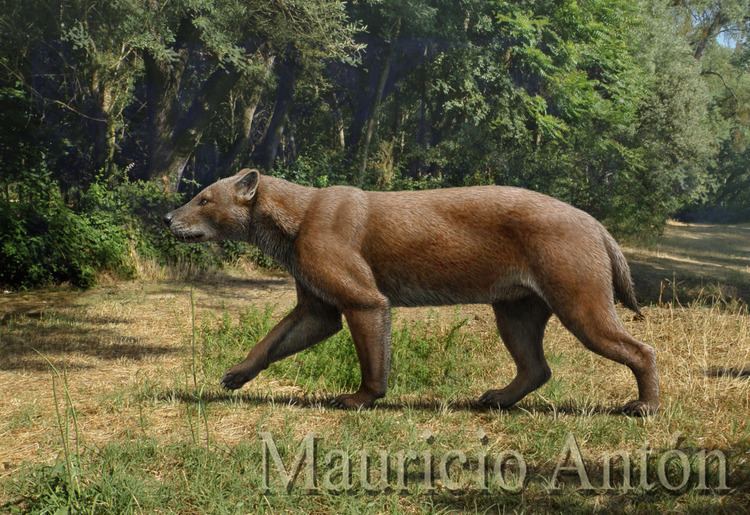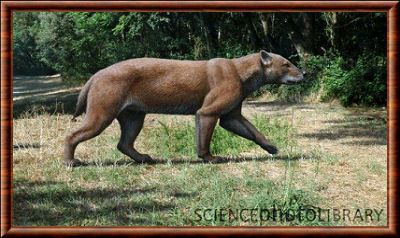Family †Hemicyonidae Phylum Chordata Rank Genus | Infraorder Arctoidea Scientific name Hemicyon Higher classification Hemicyonidae Order Carnivores | |
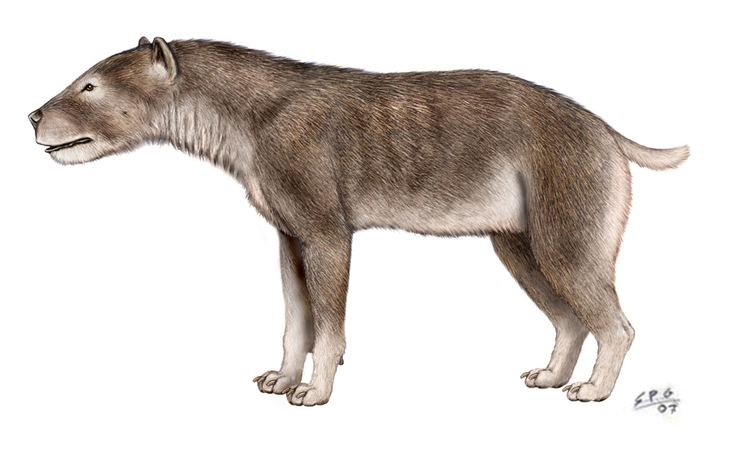 | ||
Similar Hemicyonidae, Mammal, Carnivores, Agriotherium, Ursavus | ||
Hemicyon the so-called "dog-bear," literally "Half Dog" (Greek:ἡμικυων/"hemi-kuôn"), is an extinct genus of the family Hemicyonidae, which probably originated in Eurasia but was found in Europe, Asia and North America during the Miocene epoch (23.03 to 5.33 million years ago), existing for approximately 16.9 to 11.1 mya.
Contents
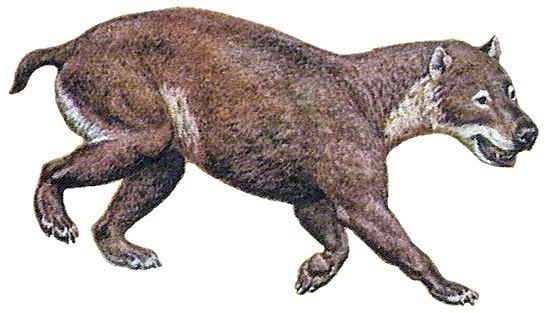
Morphology

Hemicyon was about 1.5 metres (5 ft) long, and 70 centimetres (28 in) tall, with somewhat tiger-like proportions and dog-like teeth. Hemicyon is widely accepted to have been hypercarnivorous and highly predaceous. Unlike modern bears, Hemicyon walked on its toes, that is, it was not plantigrade, but digitigrade, with long metapodials. This suggests that Hemicyon must have been an active hunter and a good runner, and presumably hunted on the plains, possibly in packs. This also distinguishes it from the true bears, which are plantigrade, and gives it a greater affinity to dogs, which are digitigrade.
Body mass
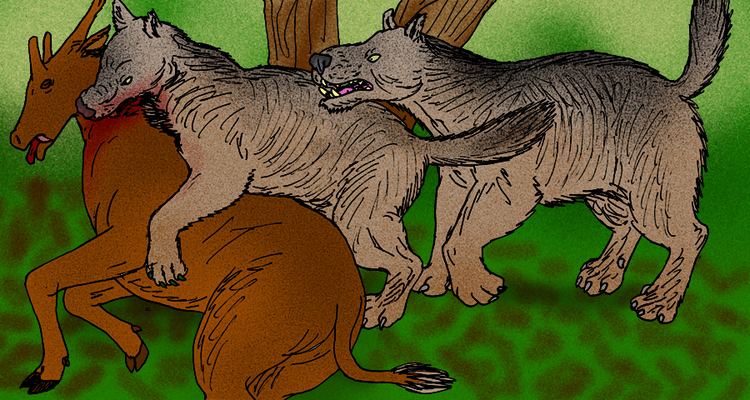
Two specimens were examined by Legendre and Roth for body mass. The first specimen was estimated to have a weight of 67.2 kg (150 lb). The second specimen was estimated to have a weight of 534.5 kg (1,200 lb).
Fossil sites
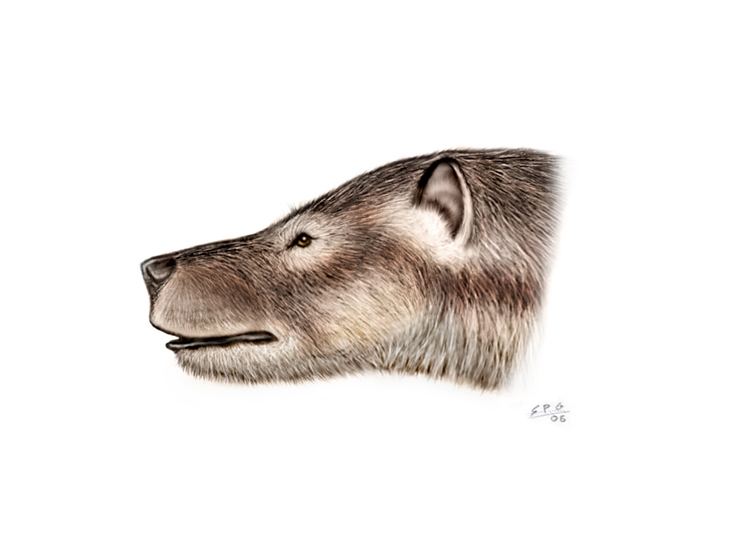
Species of Hemicyon are recognized in the medial Hemingfordian (ca. 18 million years ago) Thomas Farm site local fauna. This record of Hemicyon represents the earliest occurrence of this genus in North America. The Thomas Farm Cynelos Hemicyon is very closely related to European representatives from the early Burdigalian (ca. 20 million years ago). Other Hemicyon fossil finds include: H. teilhardi from the Middle Miocene Hujialian Formation in the Linxia Basing, Gansu Province, China; an Early Miocene Hemicyon from Lanzhu Basin Shan Mong fauna, China; Hemicyon of the Mid-Miocene Dongxiang and Laogou Formation in Linxia Basin on the northeast margin of the Tibetan Plateau; Mid-Miocene H. sansaniensis of Arroyo del Val area, Villafeliche, Zaragoza Province, Spain; Mid-Miocene H. mayorali of Tarazona de Aragon, Spain; a Hemicyon found at the Somosaguas site, Pozuelo de Alarcón, Madrid; H. sansaniensis from the Mid-Miocene Anchitherium fauna of İnönü locality, NW Ankara; a Lower Miocene (Eggenburgian-Ottnangian: ca. 20 Ma) H stehlini found in the coal bed of Banovići Basin, Bosnia; an Early Hemingfordian Hemicyonid (ca. 16 Ma) from the Pollack Farm Fauna, Delaware; and an excellent Hemicyon specimen from the Miocene Sante Fe Formation, New Mexico.
Hemicyonidae fossil evidence may also have been found in the Gaillard Cut Local Fauna, former Canal Zone, Republic of Panama, but it is indeterminant with Amphicyonidae. Despite its close proximity to South America, given the geological context, the Gaillard Cut Local Fauna are distinctly North American fauna and the age of this assemblage is dated between 19.5 and 14 Ma.

